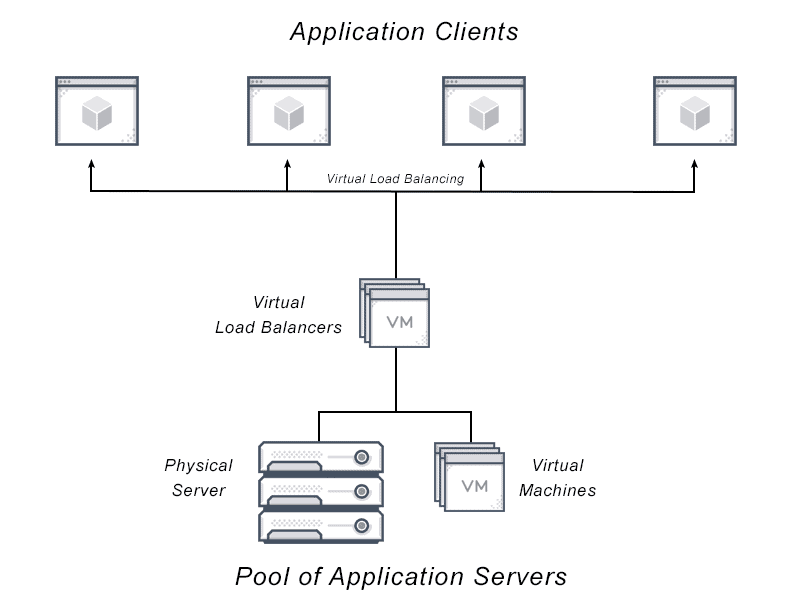Virtual Load Balancer Definition
A Virtual Load Balancer provides more flexibility to balance the workload of a server by distributing traffic across multiple network servers. Virtual load balancing aims to mimic software-driven infrastructure through virtualization. It runs the software of a physical load balancing appliance on a virtual machine.

What is a Virtual Load Balancer?
A virtual network load balancer promises to deliver software load balancing by taking the software of a physical appliance and running it on a virtual machine load balancer. Virtual load balancers, however, are a short-term solution. The architectural challenges of traditional hardware appliances remain, such as limited scalability and automation, and lack of central management (including the separation of control plane and data plane) in data centers.
How Does Virtual Load Balancing Work?
The traditional application delivery controller companies build virtual load balancers that utilize code from legacy hardware load balancers. The code simply runs on a virtual machine. But these virtual load balancers are still monolithic load balancers with static capacity.
Virtual Load Balancer vs. Hardware Load Balancer?
The complexity and limitations of a virtual load balancer is similar to that of a hardware load balancer.
A hardware load balancer uses rack-mounted, on-premises physical hardware. Hardware load balancers are proven to handle high traffic volume well. But the hardware can be expensive and limit flexibility.
A virtual load balancer uses the same code from a physical appliance. It also tightly couples the data and control plane in the same virtual machine. This leads to the same inflexibility as the hardware load balancer.
For example, while an F5 virtual load balancer lowers the CapEx compared to hardware load balancers, virtual appliances are in reality hardware-defined software.
Virtual Load Balancer vs. Software Load Balancer?
Virtual load balancers seem similar to a software load balancer, but the key difference is that virtual versions are not software-defined. That means virtual load balancers do not solve the issues of inelasticity, cost and manual operations plagued by traditional hardware-based load balancers.
Software load balancers, however, are an entirely different architecture designed for high performance and agility. Software load balancers also offer lower cost without being locked into any one vendor.
Does Avi Offer a Virtual Load Balancer ?
No, Avi Networks does not offer a virtual load balancer. Avi offers a software-defined load balancing solution called Avi, which uses a software-defined scale-out architecture that separates the central control plane (Avi Controller) from the distributed data plane (Avi Service Engine). It delivers extensible application services including load balancing, security and container ingress on ONE platform across any environment. Avi is 100% REST API based that makes it fully automatable and seamless with the CI/CD pipeline for application delivery. With elastic autoscaling, Avi can scale based on application loads. And built-in analytics provide actionable insights based on performance monitoring, logs and security events in a single dashboard (Avi App Insights) with end-to-end visibility.
For more on the actual implementation of load balancers, check out our Application Delivery How-To Videos.
For more information on virtual load balancers see the following resources: